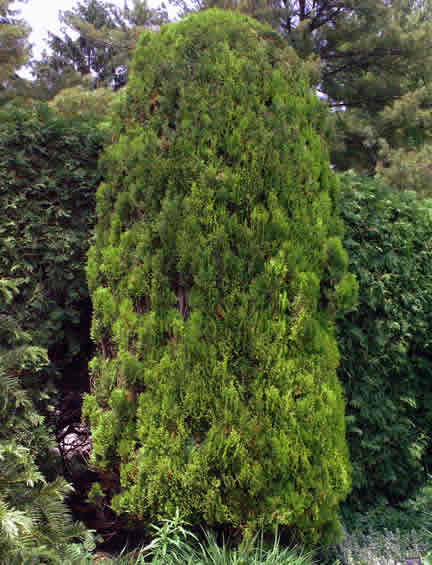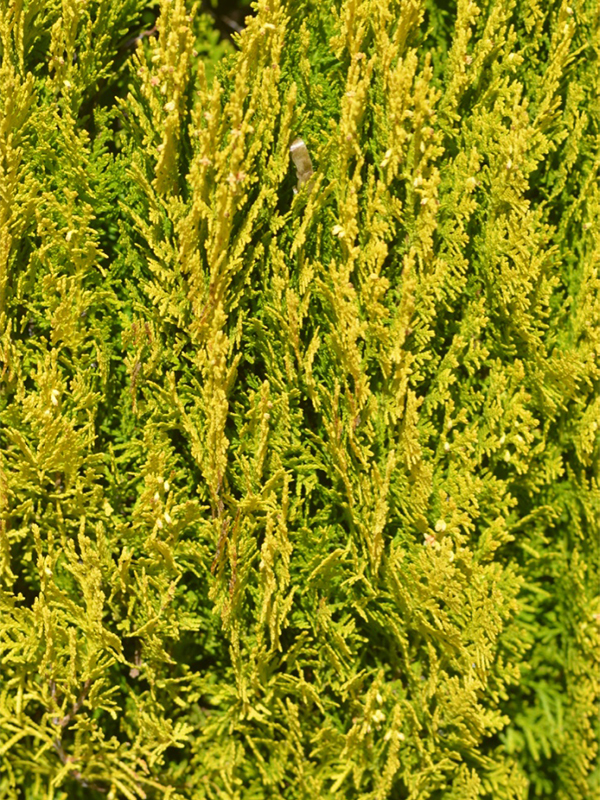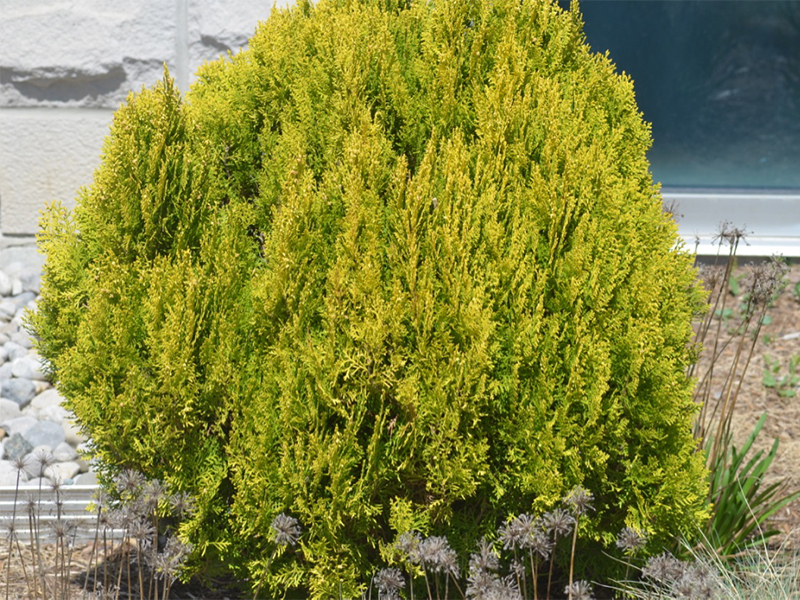
Woody > Thuja > Thuja orientalis > Thuja orientalis 'Aurea Nana'
Thuja orientalis
'Aurea Nana'
Dwarf Golden Oriental Cedar

"
Thuja orentalis 'Aurea Nana' better known as the Dwarf Golden Oriental Cedar. It is a bright yellowy-green coloured evergreen that will lighten up your garden throughout the warm seasons, turning a slight brownish colour in the winter. This specimen thrives in a well-drained loam or sandy soil in full sun. Since it is a very slow growing plant it will take 20-70 plus years for it to reach its short maximum height of around 5-6 metres. It has a thin scale foliage that, from a distance makes the shrub look very puffy and almost as if it has hairs. The Dwarf Golden Oriental Cedar is subject to Bagworm and spider mites as well as other pests. This species may also be prone to canker, so keeping a good eye on it is a good idea to make sure it stays healthy. Although the plant requires a good well-drained soil to grow in, it can still do well in a low maintenance gravel or rock garden. This specimen is a great choice for gardeners who want to spice up their style when planting evergreens, its glowing yellowy-green colour and egg shaped form will surely catch a bystanders attention.
Michael Pascoe, NDP., ODH., CLT., MSc. (Plant Conservation)
"
| Family |
| Cupressaceae |
| Genus |
| Thuja |
| Species |
| orientalis |
| Cultivar |
| 'Aurea Nana' |
| Category |
| Woody |
| Type |
| Shrub (evergreen) |
| Pronunciation |
| USDA Hardiness Zone |
| 6 - 9 |
| Canadian Hardiness Zone |
| 5b - 11a |
| RHS Hardiness Zone |
| H7 |
| Temperature (°C) |
| -20 |
| Temperature (°F) |
| -5 |
| Height |
| 1 m |
| Spread |
| 1 m |
| Cultivation |
| Full sun. Moist and well-drained soil with a pH of acidic, alkaline and neutral. Prefers chalk, clay, sand and loam. |
| Shape |
| Small, rounded and spreading. |
| Growth |
| Slow |
| Pests |
| Canker may be a problem. Bagworms and spider mites, scale, aphids, caterpillars, borers and mealybugs can occur. |
| Bark/Stem Description |
| Stems and branches are small. |
| Flower/Leaf Bud Description |
| The buds are very inconspicuous and not easily seen. |
| Leaf Description |
| Dense and flattened sprays of foliage. |
| Fruit Description |
| Oval female cones that are 1 - 2 cm long may appear. |
| Colour Description |
| Foliage is a yellowish-green and may bronze in winter. The bark is a reddish-brown colour. |
| Texture Description |
| Medium texture. |
| Propagation |
| Semi-hardwood cuttings and division. |


